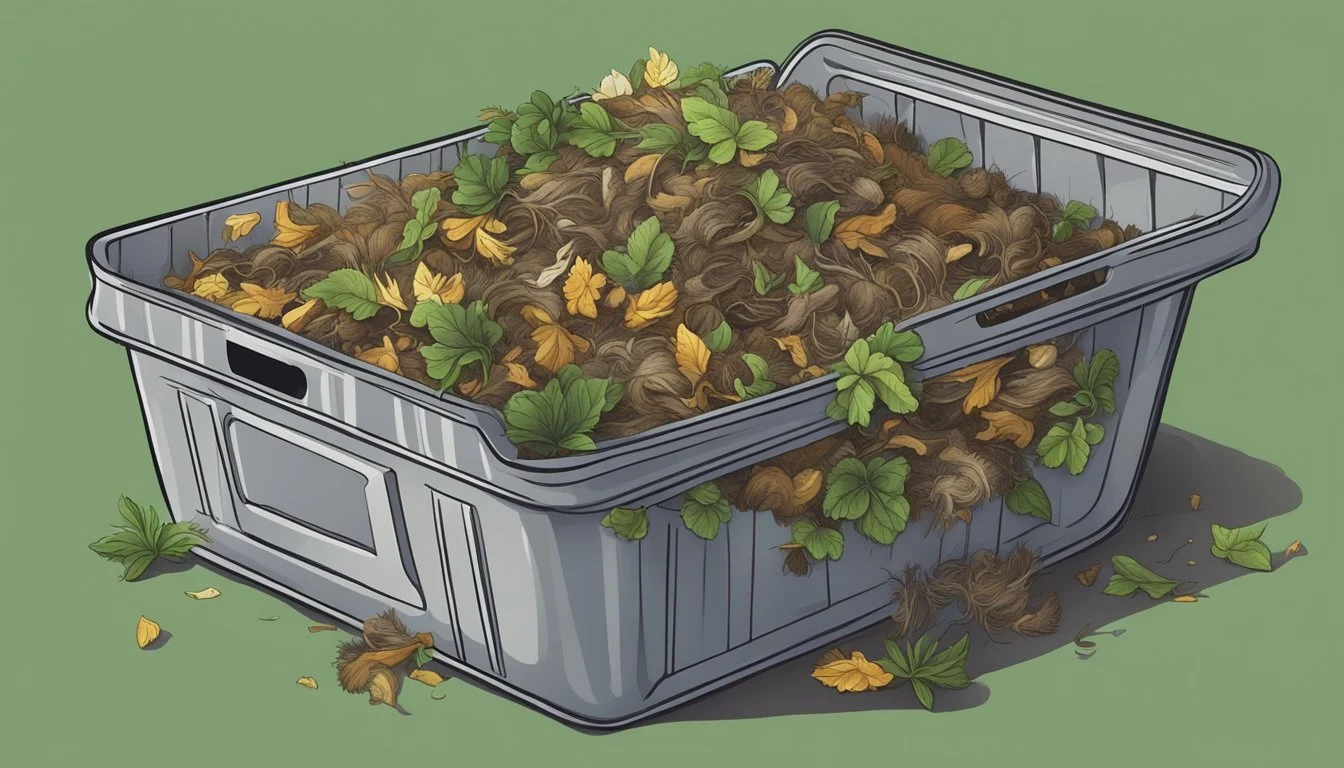Can You Compost Hair?
Understanding its Role in Eco-Friendly Waste Management
Composting is a widely-practiced method of recycling organic material by allowing it to decompose naturally to create a nutrient-rich soil amendment. Among the many items traditionally added to the compost bin, such as fruit and vegetable scraps, leaves, and cardboard, there is the less commonly known potential component – human hair. Hair, like other organic substances, contains valuable nutrients that can benefit the composting process.
Many may not realize that hair is rich in nitrogen, an essential element that contributes to the health of soil. When incorporated into a compost pile, hair decomposes over time and releases this nitrogen, aiding in the creation of a balanced compost. The process is not limited to human hair; pet hair can also be composted. However, attention must be given to ensure that the hair is untreated with chemicals such as dyes or styling products, as these can be detrimental to the composting process and the eventual health of the soil.
A successful compost requires a mix of green materials, which provide nitrogen, and brown materials, which provide carbon. Hair adds to the nitrogen content and thus should be balanced with carbon-rich materials like dry leaves or paper. The resulting compost, once fully decomposed, can then be used to enrich garden soil, bolstering plant growth and contributing to the sustainability cycle.
What Is Composting?
Composting is a natural process that transforms organic material into a rich soil amendment known as compost. During composting, organic matter such as leaves, vegetable scraps, and even hair undergoes decomposition. This process is facilitated by microorganisms such as bacteria, along with fungi, and in some cases, worms.
Key Components of Composting:
Carbon: Often referred to as brown ingredients, these are carbon-rich materials like leaves, straw, and paper.
Nitrogen: Known as green ingredients, these nitrogen-rich materials include food scraps, coffee grounds, and grass clippings.
Oxygen: Essential for aerobic decomposition, aeration helps avoid the production of methane, a potent greenhouse gas.
Moisture: Optimal moisture levels are crucial for microorganism survival and activity.
The composting process entails balancing these components in a compost pile or compost bin. The aim is to foster an environment that supports the growth of microorganisms that break down organic waste. Efficient decomposition also requires regular turning to maintain aeration and moisture.
Compost provides vital nutrients such as nitrogen, hydrogen, phosphorus, and potassium to the soil, enhancing soil structure and promoting plant growth. It’s an effective soil amendment, turning waste into valuable food for an organic garden.
Lastly, composting reduces landfill waste, mitigates methane emissions, and can even include vermicompost—the practice of using worms to aid in decomposition.
By adhering to proper composting practices, gardeners and environmental enthusiasts can effectively recycle yard waste and compostable materials, closing the loop on the nutrient cycle and maintaining sustainable gardening practices.
The Role of Hair in Compost
Hair, both human and pet, is an organic material that when added to compost heaps, contributes essential nutrients, promotes a more balanced nitrogen-carbon ratio, and aids in soil fertilization. In this section, we’ll explore the types of hair that are suitable for composting, the benefits hair provides within composting processes, and the challenges that may arise.
Types of Hair Suitable for Composting
Human Hair: Untreated human hair from hair salons or home haircuts.
Pet Hair: Includes dog and cat hair, typically from pet groomer outlets.
It’s crucial to use hair free of chemicals, such as untreated human hair and pet fur, in compost to avoid introducing potentially harmful substances.
Potential Benefits of Hair in Compost
Nutrient-Rich: Hair is composed mainly of keratin, a type of protein, and is rich in nitrogen, which is vital for compost.
Soil Structure Improvement: When decomposed, hair can improve soil structure by providing nutrients that are beneficial for plants.
Hair acts as a high-protein additive that enriches compost with nitrogen, which in turn serves as an excellent slow-release fertilizer for the soil.
Challenges with Hair in Compost
Slow Decomposition: Hair breaks down very slowly due to keratin.
Risk of Clumping: Hair can clump together, reducing aeration and slowing the decomposition process.
Composting hair requires a good mixture with carbon-rich materials to facilitate appropriate breakdown and to help keep the compost aerated. Preventative measures must be taken to ensure that hair does not become a deterrent to the activity of microorganisms and worms due to clumping or the presence of toxic chemicals from products like hairspray or gel.


